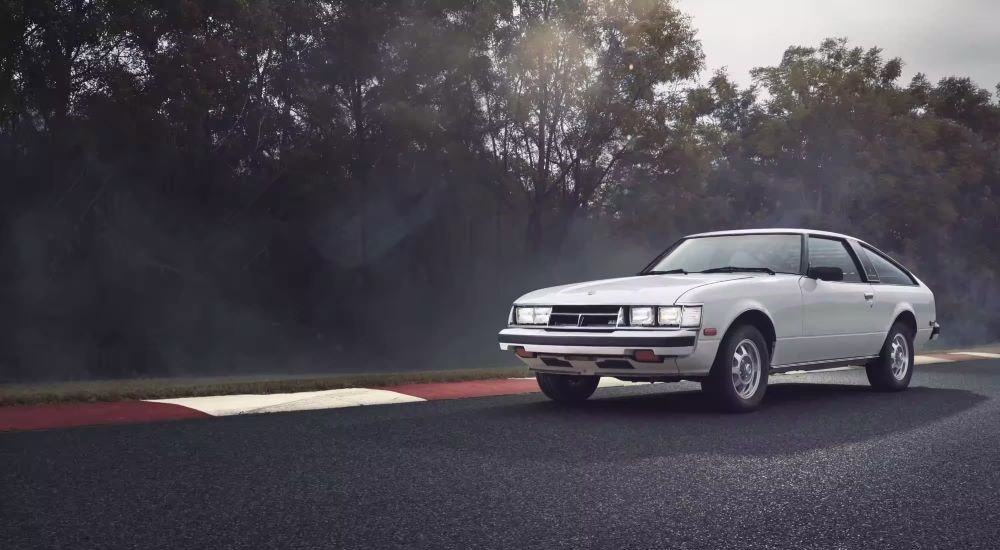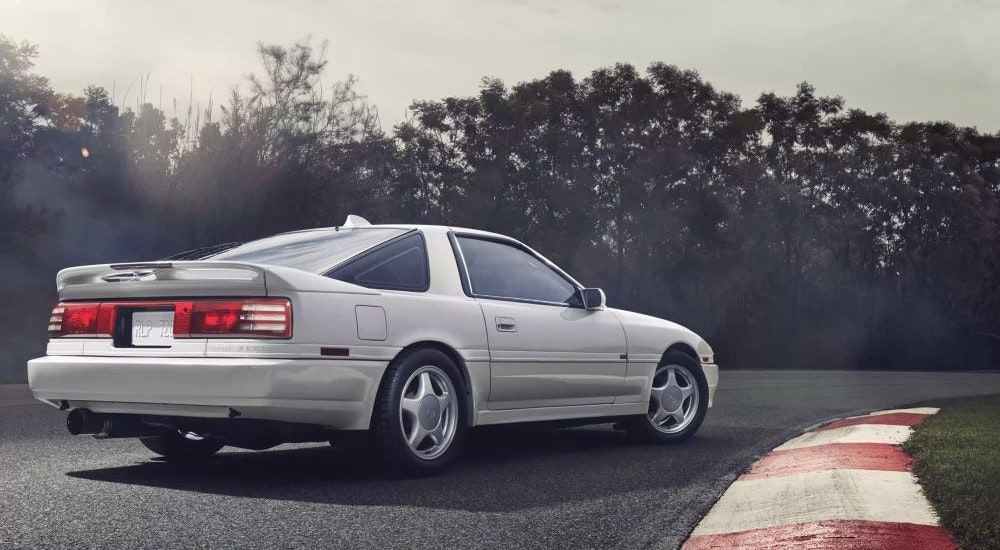
The History of the Legendary Toyota Supra, From the 1970s to the Present
Toyota might be known to many as a maker of practical cars, trucks, and SUVs like the efficient Prius, dependable RAV4, and hard-working Tacoma. Automotive enthusiasts, however, know that the automaker has also made many sports cars. Today, we look at the history of one of these fun-to-drive performance models: the Supra. Younger drivers may look at the 2024 Toyota Supra and see a new model that’s only been around for a few years, but that’s not the case. The Supra has a long and storied history behind it.
Before the Supra, there was the Celica. In the 1970s, the Celica made a name for itself at rally races and earned a reputation for being an affordable and fun-to-drive model that could punch above its class. In 1979, a variant called the Celica Supra made its debut. This longer, wider version of the car would one day be respected as a unique model.
Let’s start at the beginning and dive into the story of the Supra.
First Generation: 1979-1981
The Celica Supra didn’t just have a larger body shape than the standard Celica—it needed that supersizing to fit a more powerful engine under the hood. The 110-hp 2.6L I-6 was the first Toyota production engine to use electronic fuel injection, giving the powertrain more precision to get the exact amount of fuel required. The Supra also stood closer to the ground than other models of the Celica and had a unique front-end design.
Second Generation: 1982-1986
The entire Celica lineup was overhauled for the 1982 model year, which meant a new generation of the Supra, still called the Celica Supra at the time. While the wheelbase of the new Supra was a tad shorter, its overall exterior gained even more length and width, and its styling was bolder to reflect its athletic performance. The second generation looks more like it belongs on a race track than its predecessor, with a sleek front end, long hood, and pop-up headlights that can fold down for improved daily aerodynamics.
Under the hood, a 2.8L I-6 produced 145 hp and used double overhead cams to make the Supra soar. Between this upgrade and a new set of independent semi-trailing arms replacing the rear axle of the old generation, the new generation was a formidable foe even against big names like Ferrari and Porsche. In a 1984 comparison test conducted by Car and Driver, the Supra came in fourth overall, beating out models from both automakers in a head-to-head competition to see which imported car had the best handling. The magazine also included the model on its 10Best Cars list in 1983 and 1984.

Third Generation: 1987-1992
For the 1987 model year (marketed as the 1986 1⁄2 model year), the Supra got a new generation and broke away from the Celica lineup to become its distinct model for the first time. The Supra sped past the marker for this new milestone with plenty of pep, thanks to a new 3.0L engine that delivered an even 200 hp. The third-generation Supra also got other equipment upgrades, like an anti-lock braking system and continuous damping control.
Fourth Generation: 1993-1999
Where previous generations had been all sharp corners and bold lines, the fourth generation Supra was a breath of fresh air with a smooth body design that looked fun and sporty—just the right look to match its personality. While performance drivers have always loved the Supra, the 1993 model took things to a new level with a regular model and a powerful Turbo option that produced a whopping 320 hp and 315 lb-ft of torque. The Turbo Supra was a beast that could zip from zero to 60 mph in just 5.2 seconds, an impressive acceleration for the time, and one that was an improvement over the likes of the Chevy Corvette, Porsche 968, and Mazda RX-7 in testing done by Car and Driver in 1993.
While the most essential part of a supercar is its performance, the interior design deserves attention, too. The fourth-gen Supra had a veritable cockpit, putting the driver first and foremost at the command of a high-tech dashboard. Exterior changes also went beyond smoothing out the Supra’s rough edges. They featured new techniques to make the car more lightweight, like using a unique material to make the rear spoiler hollow on Turbo models.
For the 1997 model year, the Supra got a limited edition to celebrate its 15th anniversary. It also has a stronger frame and more sound-deadening material to improve the driver experience. But this was the last big update the Supra would see for a long time. As the high-performance segment saw a decline, the Supra was discontinued after the 1999 model year, and North American drivers were left wondering if it would ever return.
Hiatus: 2000-2019
For two decades, no Supras were produced by Toyota. But that doesn’t mean drivers forgot about the beloved model in the interim. The Supra continued to be a favored car for drag racers, who found that its platform could easily support aftermarket improvements that raised hp figures to 800 and beyond. In the mainstream, the Supra was in the spotlight when it appeared in the first Fast and the Furious movie in 2001. This cameo didn’t immediately revive the Supra, of course. However, in 2017, Toyota filed a trademark for the Supra nameplate in the US, making fans think that a new generation was coming. They were right.
Fifth Generation: 2020-Present
The all-new fifth-generation GR Supra appeared at the 2019 Detroit auto show, exciting enthusiasts and preparing eager buyers for the return of the iconic model.
With a 335-horsepower turbocharged engine under the hood and a bold exterior that pays homage to the nameplate’s history while embracing modern pony car styling, the 2020 Supra took the auto industry by storm, winning awards from several prominent organizations. MotorTrend named it an Automobile All-Star, JD Power named it one of the best premium sporty cars of the year, and Car and Driver named it an Editor’s Choice and a 10Best pick.

The Supra Today
For the 2024 model year, Toyota is celebrating another milestone with a 45th Anniversary Edition that comes in bright white or bold orange and contrasts those colors with black accents, including matte-black wheels, black graphics along the sides, and a black spoiler in the rear. While this edition is limited to 900 vehicles, there are plenty of other Supras to go around, from the base 2.0 trim to the 3.0 Premium, which features niceties like 14-way power-adjustable heated seats and a 12-speaker JBL audio system that lets you blast your favorite tunes as you get your thrills behind the wheel.
All Supras come with a complimentary one-year National Auto Sport Association membership. This perk includes a high-performance driving experience so you can learn to unleash the full power of this legendary car. Whether you own a fifth-gen Supra or just admire it from afar, it’s an impressive car. While plenty of modern engineering is at play, the Supra also owes a lot to its long history of excellence, which undoubtedly inspired the designers to shoot for the moon. We’re excited to see what’s in store for the next chapter of the Supra.


